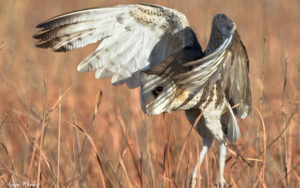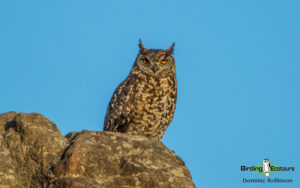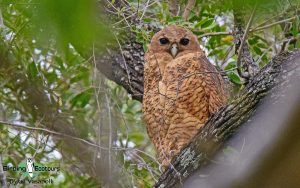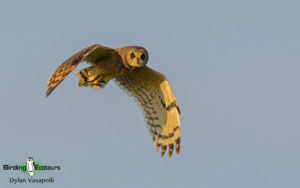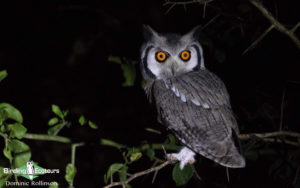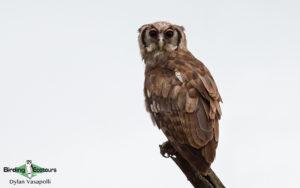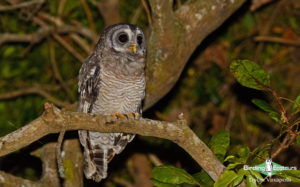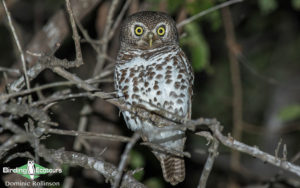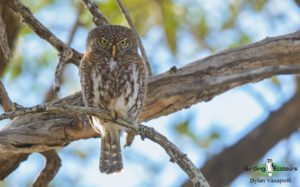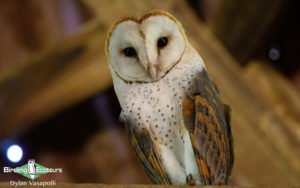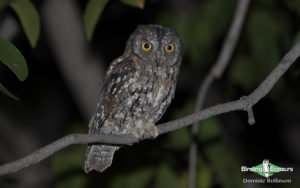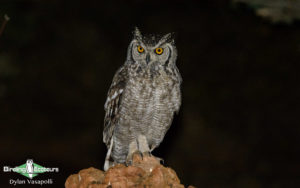Owls of Southern Africa
Go to: Namibia Birding Tours | Botswana Birding Tours | South Africa Birding Tours | Birding Tours in Africa | Owls of the World Tours | All our birding tours
The twelve owls of southern Africa: custom birding tours in Namibia, Botswana and South Africa
We run tailor-made birding tours targeting all twelve of southern Africa’s owl species. Please do kindly peruse the information below and let us know if you want us to arrange a tour of any length to see these magnificent birds. A 12- to 15-day trip is needed if you want a realistic chance of seeing all twelve owl species, but we can arrange shorter trips (even just half or full day tours) to target just a couple of them. For example, if you find yourself in Johannesburg, we can actually find some of the most amazing species given just a day. It should also be noted that a couple of our set departure tours, especially our Namibia/Okavango/Victoria Falls trip each November, are brilliant for these owls, along with so many other birds and mammals, if you enjoy the small group experience, rather than a private, bespoke tour.
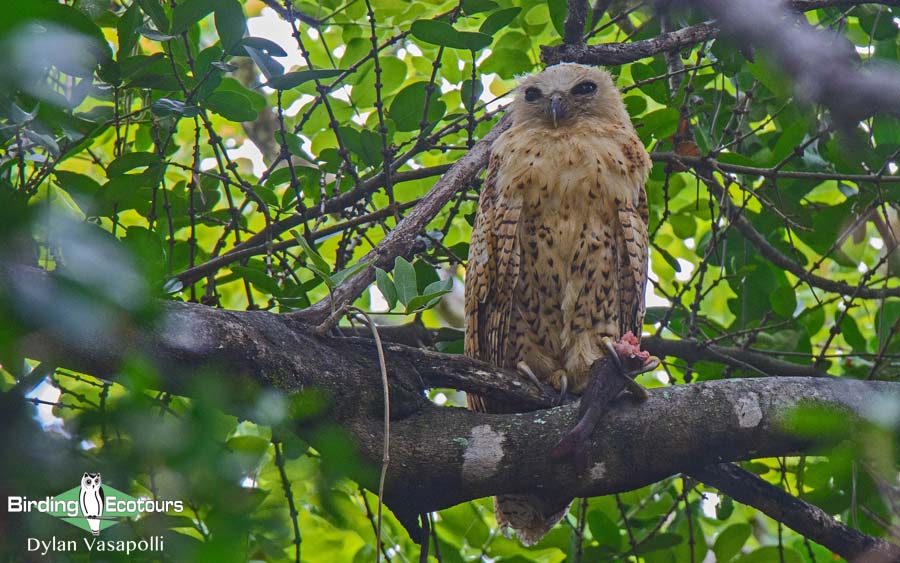
Pel’s Fishing Owl is one of the most charismatic birds in Africa. This massive owl can be difficult to locate, but the Okavango Delta of Botswana boasts an unusually high density of this species and we almost invariably see it on our trips there. We usually find this hefty, ginger owl at its daytime roosts during boat trips along the Okavango channels, but we sometimes also look for it during walks through riverine forest, often on the well-wooded islands within this vast inland delta. We also sometimes do spot-lighting boat cruises at night for this incredible bird so we can observe it in action, rather than just roosting. The Caprivi Strip of Namibia, just across the border from the Okavango, is also excellent for Pel’s Fishing Owl (such as along the mighty Zambezi River). We’ve also been known to find this species in South Africa for a number of our clients; although it’s rare there, we do have some fairly reliable sites (not as reliable as the Okavango though!).
African Grass Owl (like the fishing owl) is another species that can be difficult to find. Being scarce, and more strictly nocturnal than the relatively abundant Marsh Owl which shares the same habitat, one really has to know where and how to look for this species. Our birding guides have spent hours getting to know the sites and working out how to show these birds to clients. The outskirts of Johannesburg, South Africa, is an excellent area for both these species (often one will see ten Marsh Owls before laying eyes on an African Grass Owl though!). If you have time for a 1-2-night trip though, we very much like to look for African Grass Owl four hours’ southeast of Jo’burg, near the highland village of Wakkerstroom (which, conveniently, is also known for its South African endemics including some incredibly rare, localized larks, beautiful korhaans and more). There are also sites for African Grass Owl in the Cape and other parts of South Africa, and Harare in Zimbabwe is excellent for it too.
Cape Eagle-Owl is the third tricky-to-find owl species in southern Africa, and one of our favorite places for it (where we seldom miss it), is another highland village (Dullstroom) only two and a half hours’ drive east of Johannesburg, conveniently midway to the Kruger National Park. The Drakensberg and KwaZulu-Natal midlands not far from Durban, are also great for it. We find this large owl with more difficulty in the Cape, but for sure we do have sites in that region to look (the Cederberg range is one good area, for example). We do also see the larger two subspecies of Cape Eagle-Owl (sometimes split into Mackinder’s Eagle-Owl) on our East African tours (the largest one is an Ethiopian endemic subspecies). The type subspecies of Cape Eagle-Owl only occurs in South Africa, Lesotho, Swaziland and Namibia (where it is poorly known and might be more common than previously thought in some of the rugged mountains of the Namib Escarpment).
The other nine species of southern African owls tend to be easier to find; given a 12-15-day birding tour focusing on finding the “difficult three” mentioned above, we should find all the others too. That means that given at least twelve days, we usually clean up on the twelve owls of southern Africa. In the process, we also experience some of Africa’s greatest wildlife havens (e.g. the Okavango Delta and Etosha National Park, both marvelous places for owls, along with the megafauna). We sometimes see a good number of the owl species at their day-time roosts, meaning we don’t always have to tire ourselves out with too many night sessions (and some tour participants do opt out of some of the night sessions which is OK!).
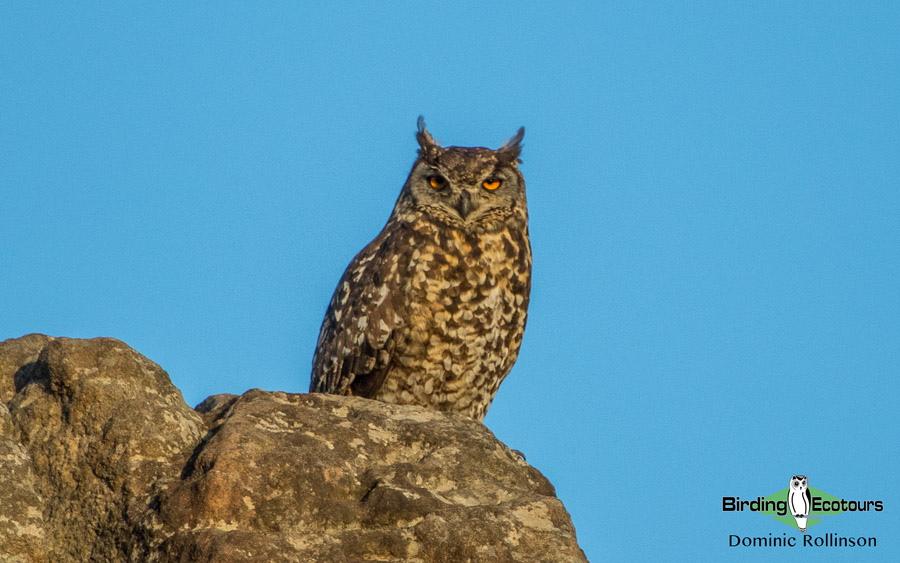
We offer these owling tours as bespoke tours, rather than as set departures. So, we can custom-make an owl-focused itinerary, any time, to suit your requirements. But what we recommend is something like the 15-day itinerary outlined below:
We recommend that on Day 1, you fly into Windhoek, Namibia, where our guide will fetch you before heading to the vast Etosha National Park. This is actually where we find the greatest number of owl species. It’s a paradise for owls, along with African megafauna and a host of other wildlife that makes this great game park its home. The monstrous Verreaux’s Eagle-Owl (aka Giant Eagle-Owl or Milky Eagle-Owl) is sometimes one of the first species we see here in Etosha, often near the amazing waterhole (where Black Rhino and large numbers of other game species come to drink) at Okuakuejo. We often get good visuals of this species during the day, but can also be entertained by its incredibly deep, gruff call at night while enjoying the floodlit waterhole. This huge owl is not trivial to find, but if we do miss it in Namibia, then we have a site near Rust de Winter/Zaagkuilsdrift about 1.5 hours’ drive from Johannesburg airport where we pretty reliably find this species, assuming you include the recommended South African piece detailed towards the end of this sample itinerary. Pearl-spotted Owlet (one of two pygmy owl species we look for in southern Africa) is almost always also seen near the start of any visit to Etosha National Park. Spotted Eagle-Owl, like Pearl-spotted Owlet, is one of the two most common southern African owls so we should also see this quite early on during the Namibia section of this tour, but strangely we have missed it there before so as always there are no guarantees (but we should certainly see this on the South Africa leg of the trip below).
After spending a couple of nights at Okuakuejo, we head eastwards to Halali, traversing a large chunk of Etosha National Park. Halali is where we look for the tiny African Scops Owl and the attractive Southern White-faced Owl at their daytime roosts. The latter species is not always easy to find but there are numerous other sites in Namibia where we might see it besides Etosha, and at Rust de Winter/Dinokeng in South Africa we also have a backup site, just in case! This (Halali) is one of the best places in the park for Leopard, but we may also see this beautiful cat on our next stop, near the eastern edge of the park at Namutoni, a very good place for Western Barn Owl along with diurnal raptors (e.g. the beautiful Red-necked Falcon) and many other birds and mammals.
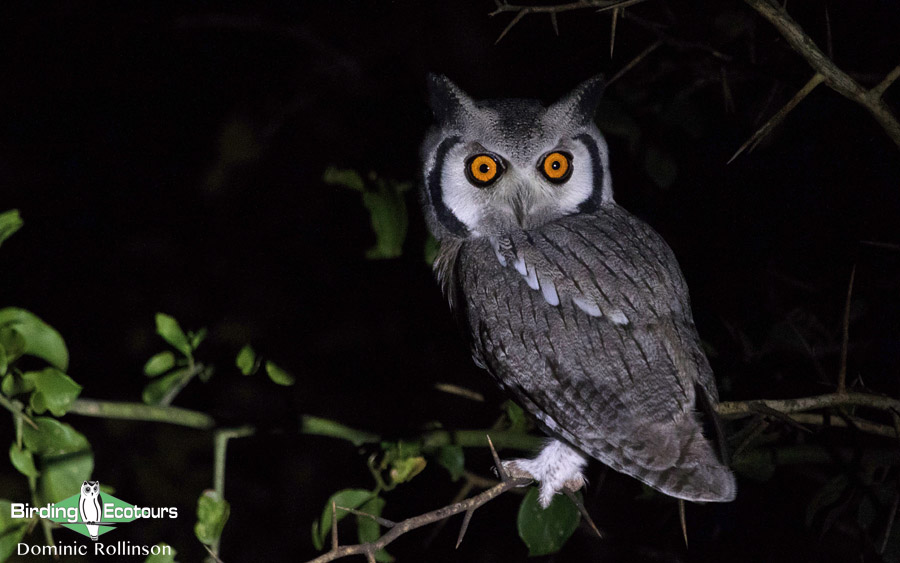
We often spend about six nights in Etosha, enjoying all the other birds and wildlife, and finding the first half a dozen owl species. The Kgalagadi Transfrontier Park in South Africa and Botswana is another great place for these same owls that we usually look for in Etosha, in case you want us to tailor-make your tour by using that park rather than Etosha (as it has similar owls and other wildlife).
After seeing the first six owl species, the panhandle of the Okavango Delta, in neighboring Botswana, is then within easy reach of eastern Etosha. This must be the best place on the planet to see Pel’s Fishing Owl. We usually stay at one of the fine lodges near Shakawe on the edge of the Okavango, such as Drotsky’s Cabins, Xaro Lodge or Shakawe Lodge/Shakawe Fishing Camp. African Barred Owlet is common here (in South Africa’s Kruger National Park and other sites it can be ever so scarce, but it abounds in the Okavango Swamps). African Wood Owl is also common here, and like the other two species we look for in Botswana, we usually see them during the day, without the need to go out looking at night. We do however sometimes arrange night boat cruises with spotlights here in Botswana or across the border in the Caprivi Strip of Namibia, looking for Pel’s Fishing Owl when they are more active. It gets quite exciting as Hippo and Nile Crocodile are also common here. It’s amazing to see so many White-backed Night Herons on these night boat trips; during the day these unusual herons can be so elusive and seemingly scarce.
The owl targets here aren’t usually particularly tough to find, so we have plenty of time to see a plethora of other bird species, and many mammals. This is a lush wilderness oasis in the middle of the otherwise arid surrounding Kalahari, brought to life by the huge inland delta and its life-giving water. There are so many colorful and spectacular bird species such as bee-eaters, kingfishers, barbets, weavers, storks and more.
If you prefer not to do a private tour to see all the owl species mentioned above, we actually recommend you simply join our 18-day Namibia/Okavango/Victoria Falls birding and wildlife adventure. We often see all the owl species mentioned above, on this tour.
For the remaining three owl species, we recommend South Africa. So, if you want to see all twelve owl species that southern Africa boasts, then we suggest that you spend the first week or nine days in Namibia/Botswana as described above, followed by three to six days in South Africa. Although Cape Eagle-Owl and Marsh Owl can also be seen in Namibia, both species are easier to find in South Africa, which is also the best place for African Grass Owl (although Zimbabwe is also excellent for this latter species). Please note that African countries further north are also good for some of these birds, but here we are concentrating on the southern quarter or third of Africa.
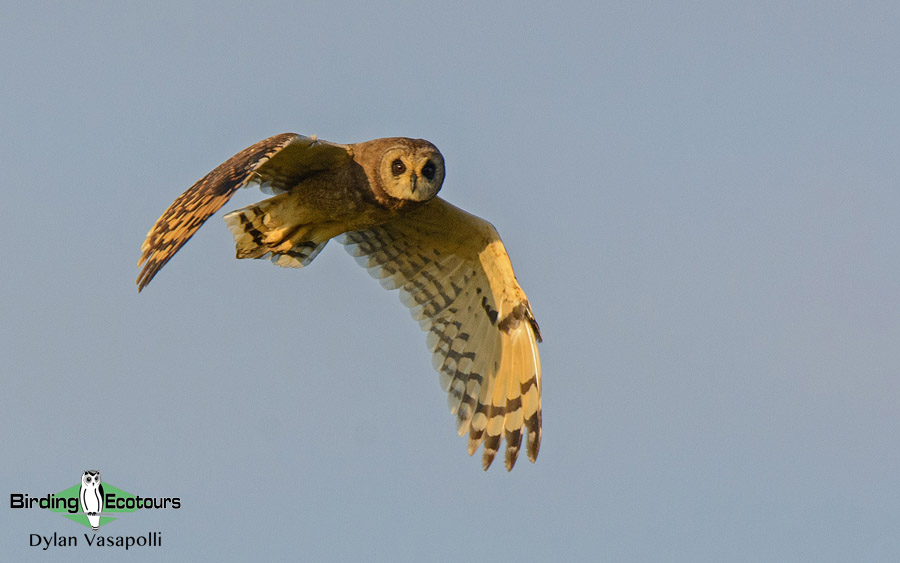
Basically, we recommend at least three or four days doing a circular route from either Johannesburg or Durban, to find the remaining handful of owl species that we don’t usually see in Namibia/Botswana. One doesn’t have to go further than two and a half hours from Johannesburg to find all these species. Having said this, the four-hour drive to Wakkerstroom is well worth doing for African Grass Owl, among a good number of South African highland endemic birds (why not get away from the big city even though these owls can be seen near Johannesburg’s main airport as well?).
As mentioned in the Namibia section above, there is also a backup site 1.5 hours’ drive from Johannesburg International Airport, where Verreaux’s Eagle-Owl and Southern White-faced Owl, along with more common owl species (and a host of other birds), can usually be found without hassles. This is the Rust de Winter/Zaagkuilsdrift area and at least one night is warranted there as a backup, if you have the time.
These South African owls, along with some mega-skulking flufftails, are the focus of our Elusive Owls and Flufftails tour. Please note that it’s possible to find all twelve owl species in South Africa, although some of them, especially Pel’s Fishing Owl, are rare or tricky in this country hence our usual recommendation to also visit Namibia/Botswana where many of the owls are easier than in South Africa.
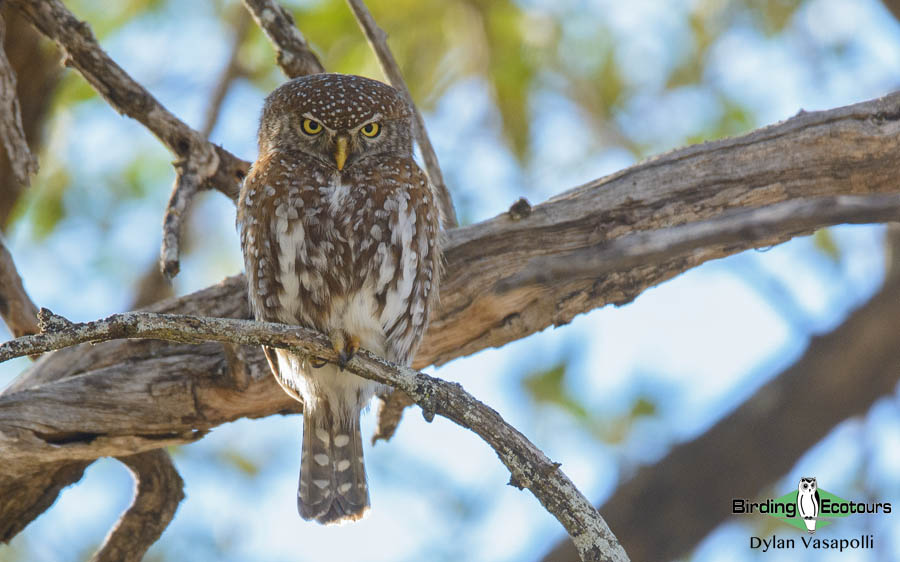
So, please do contact us if you want us to set up a custom owling (and general birding/wildlife/photography) holiday for you to see some or all of the twelve owl species occurring in southern Africa, the region south of the Zambezi and Kunene Rivers: Pel’s Fishing Owl, African Grass Owl, Marsh Owl, Cape Eagle-Owl, Spotted Eagle-Owl, Verreaux’s Eagle-Owl, Western Barn Owl, African Scops Owl, Southern White-faced Owl, African Wood Owl, Pearl-spotted Owlet, and African Barred Owlet.
Download Itinerary